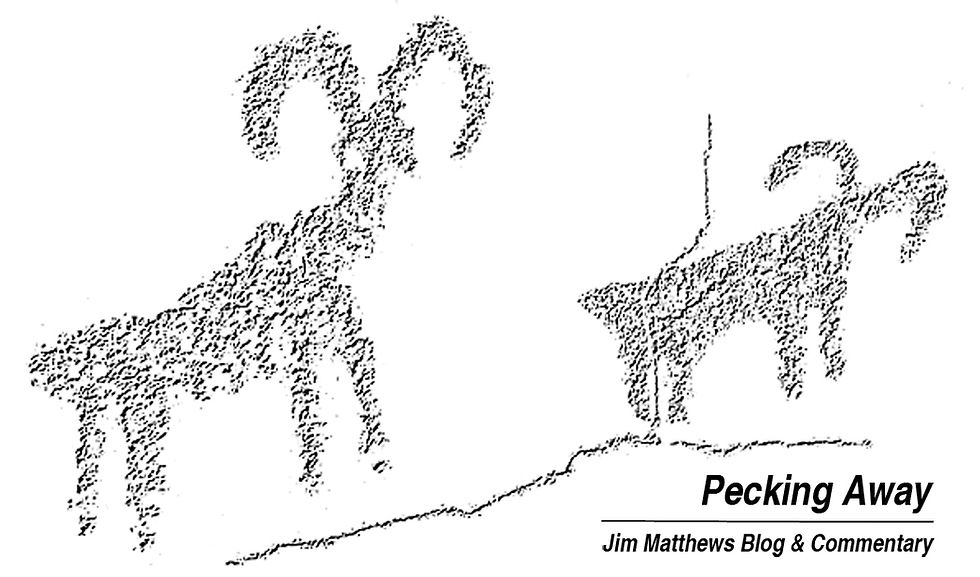Huge development near San Jacinto Wildlife Area clears first major hurdle
- Jim Matthews
- Oct 22, 2017
- 4 min read

By JIM MATTHEWS
www.OutdoorNewsService.com
The Riverside Planning Commission approved Lewis Homes’ The Villages of Lakeview development on 2,883 acres immediately south of the San Jacinto Wildlife Area on Wednesday this past week after taking public final testimony after continuing the item at two previous meetings Sept. 6 and Oct. 4.
Final approval of the massive 3,000-plus home development plan could come as early as the Nov. 14 meeting of the Riverside County Board of Supervisors.
The plan approved by the Planning Commission has significant modifications from the original proposal, with a nearly 25 percent reduction in total housing units, a scaling down of the commercial development on the north side of Ramona Expressway, creating an 800-foot buffer between any development and the wildlife area, and establishing a funding mechanism so an extra staff person could be hired at San Jacinto to help address use problems created by the development.
The planning commission approval means those who oppose or would like to see modification to the development must now take up their case with the Board of Supervisors during its public meetings.
From the beginning it was clear that approval of the master-planned development was a foregone conclusion. The development and county have been working on the project for nearly 15 years, and there has been too much money and sound planning invested in the master plan for it to fail.
The effort for those of us who love the San Jacinto Wildlife Area should now be to refocus our efforts on securing a solution to the problems the development will create and receive mitigation that will actually enhance the wildlife area.
There is actually a very simple mitigation solution that will allow the wildlife area to enhance its value to wildlife and the public. The solution is water.
San Jacinto’s lifeblood is reclaimed water from the Eastern Municipal Water District (EMWD) in Perris. In 1987, the Department of Fish and Wildlife negotiated a deal “for the life of the project” (which means as long as San Jacinto exists as a wildlife area) for 4,500-acre feet of reclaimed water per year. Over the past decade the wildlife area has only used about 2,200-acre feet per year, and the value of reclaimed water has skyrocketed and the DFW is foolishly renegotiating the original deal, abiding by one-year extensions since 2015 that allowed the use of no more than 3,100-acre feet of reclaimed water.
At full buildout, the development will create 1,900 more acre feet of reclaimed water processed by the EMWD each year.
Earmarking that reclaimed water for the San Jacinto Wildlife Area would be a simple and creative way for the developers, county, and wildlife enthusiasts to all claim victory in what has been a contentious battle. There are a number of ways that could take place, but ultimately it is a very simple solution.
The reality is that San Jacinto has stopped expanding its wetlands because of a lack of water and staffing. With the guarantee of an additional staff person and 1,900 additional acre feet of water per year once the project is complete 20 years from now, San Jacinto could easily double its seasonal and permanently flooded acreage. That value that would have to resident and migratory birds is staggering, and it would benefit all other wildlife, all of which benefits from additional water.
The question now is simply whether or not the Department of Fish and Wildlife has the will to work toward securing additional water as mitigation for the Lewis Homes development adjacent to the area. Both the county Planning Commission and Lewis Homes have been amenable to sculpting a development to accommodate the wildlife area, and this solution would give them a win-win opportunity. It is up to the DFW to push for this mitigation.
Federal duck stamp art festival
coming to Bass Pro Nov 18-19
San Bernardino County’s Wildlife Art Festival, featuring the top 100 entries in the federal Duck Stamp Art Competition, will be held 10 a.m. to 5 p.m. Nov. 18 and 19 at Bass Pro Shops in Rancho Cucamonga. Robert Hautman, the Minnesota artist who won the 2017 competition and whose art will be on the 2018 duck stamp, will be at the event both days with his winning art.
San Bernardino County brought this art exhibit to Southern California for the first time in 1983 -- the first time the duck stamp artwork was shown outside of Easton, Md., where the judging took place at the U.S. Fish and Wildlife Service’s annual gala. Now the artwork is first shown in Southern California and at event throughout the Midwest and East.
The Southern California event was held at the San Bernardino County Museum in Redlands until two years ago when a new museum director and Board of Directors decided the duck stamp exhibit “didn’t fit” into its program and mission.
Rather than lose the event and the artwork’s only showing in the Western United State, the San Bernardino County Fish and Game Commission scrambled to find a new location. Working with Bass Pro Shops, the event has a new home in the county. And there is another benefit to the new home, the exhibition is now free.
As in the past, all artwork of the 50 winners in the Junior Duck Stamp Art Competition – one from each state – will also be on display, and six of California’s finest wildlife artists will also have their works on display and for sale during this two-day event. Those artist will be Lindsey Foggett, Carl Heiman-Greene, Gary Johnson, Cliff Barnes, Lee Kromschroeder, and Rob Suttonk .
END
[Jim Matthews is a syndicated Southern California-based outdoor reporter and columnist. He can be reached via e-mail at odwriter@verizon.net or by phone at 909-887-3444.]



















